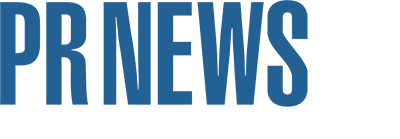
While PR consolidation isn’t new, the pace has picked up. Economic uncertainty has made it more difficult for agencies to lock in steady retainers, pushing many to merge or sell. At the same time, new technology and changing audience habits are reshaping client expectations. Media relations alone no longer cuts it; companies now want influencer strategies, paid media integration, thought leadership and content that works seamlessly across channels.
The industry has splintered into two poles. On one end are mega firms offering “everything under one roof” at a premium. On the other are small, specialized PR shops that excel in niche areas but can’t match the big players’ breadth.
Caught in the middle, many companies are pulling core PR functions in-house—restructuring teams, adopting new tools and taking on work they used to outsource. In fact, a 2022 Agility PR Solutions survey found that 31% of respondents had shifted more communications work in-house.
Faster Cycles, Higher Stakes
The communications cycle has sped up dramatically. News opportunities now come and go in hours—NewsWhip reports the half-life of a story on social media is just 2.6 hours. Miss that window, and the brand risks being left out of the conversation entirely.
Crises move even faster: PwC found 69% of business leaders have faced a corporate crisis in the past five years, yet 29% of companies have no dedicated crisis staff. For in-house teams, that means responding in real time, often without the cushion of an agency partner.
The old model—in-house strategy with agencies handling execution— can’t keep up. When Bud Light faced backlash over an influencer campaign in 2023, its slow, approval-heavy response became part of the story, underscoring how traditional agency cycles can sometimes make a crisis worse. The takeaway for in-house leaders is clear: waiting for partners to get briefed and aligned isn’t an option. Teams need the people, processes and tools to act immediately.
Budget constraints add another layer. As long-term retainers become harder to justify, companies are trimming agency hours. But the workload rarely shrinks—it just shifts in-house, often to teams not built for rapid, high-volume output.
How In-House Teams are Adapting
As consolidation reduces the number of partners and rising costs make retainers tougher to swallow, in-house teams are evolving. Tasks once routinely outsourced—media outreach, content drafting and even crisis response—are now being handled internally. Companies are hiring PR pros with digital skills and strong media ties, adopting newsroom-style workflows and embedding communicators more deeply across the organization.
Technology is a big part of this shift. A 2025 Muck Rack survey shows 75% of PR pros now use AI to draft content, automate monitoring and handle repetitive tasks that once required agency support. These tools free up leaner in-house teams to focus on higher-level strategy while keeping pace with today’s breakneck news cycle.
In practice, AI can draft press releases, pitches and social posts; flag trending topics before they peak; analyze sentiment and coverage across thousands of stories in minutes; and even distill lengthy reports or transcripts for quick use. By cutting costs and streamlining execution, these tools give internal teams breathing room to focus on strategy.
The Future
The line between “in-house” and “agency” is blurring. Internal teams are shouldering more day-to-day work, while agencies are brought in for strategic counsel, creative campaigns or to scale quickly in new markets. This isn’t a loss for the industry so much as a reset.
For in-house leaders, it means investing in talent, rethinking team structures, and embracing the reality that their role now includes both strategy and execution. In a more consolidated PR world, the most effective teams won’t be the ones with the biggest agency on retainer— they’ll be the ones that have learned to operate like an agency themselves.
Stamatis Astra is Co-Founder and Chief Business Officer of Intelligent Relations.
